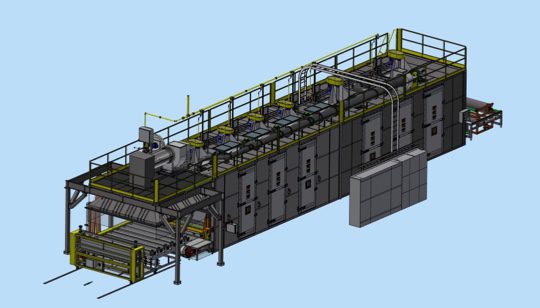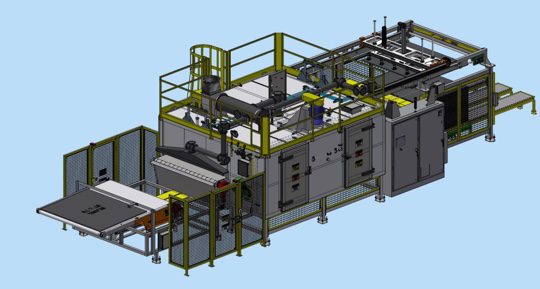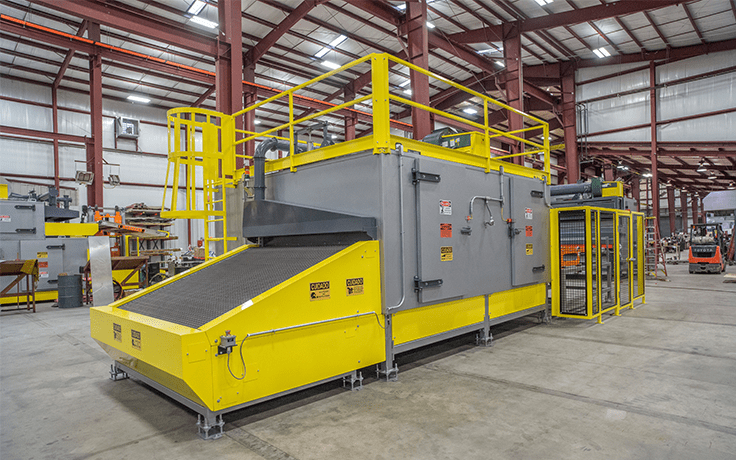From the mail bag: Turning rough requirements into solid industrial oven specs
As with anyone offering custom equipment, we receive a lot of questions from potential buyers.
What one person asks, others are probably also wondering. So, we thought it might be helpful to begin a series of articles that answer the questions and address the challenges manufacturers face regarding thermal processing.
Here’s our first:
“Looking for a custom conveyor oven that can reach temps up to 500F. It needs a controller allowing for ramping and multiple set points.”
The above is almost a verbatim request we received not long ago. We get RFQs like this constantly.
It’s clear this person needs a custom oven. But it’s not clear — yet — what shape that will take.
Here’s how our engineers turn a two-sentence RFQ into a custom-engineered oven suited for a customer’s manufacturing requirements.

Can I come to Davron with partial information?
Yes!
The example RFQ above definitely qualifies as partial.
And that’s absolutely fine. Many of our customers work at companies that make unique parts or materials that require specialized thermal processing equipment. If you’re worried you don’t have enough solid information to even approach an oven provider, it’s actually a sign that the time is right to get in touch with one.
So don’t censor yourself. Whatever information you have, it’s a start.
The first phone call & oven information forms
Much is left unsaid in that example RFQ. So in a case like this, it’s time for a phone call.
If someone has developed a new product or process, they’ve likely poured enough R&D energy into the task to know quite a bit about their product and even have a general idea about the processing time and temperature requirements. We fill in the gap of figuring out what is required to create those conditions within the equipment.
In other cases, a phone call might not reveal much more than what we received online. That tends to happen when someone is using equipment that’s old or otherwise works quite poorly. This can lead to great uncertainty about how a product would react in a well-built oven. If uncertainty prevails, we’ll send over an oven information form so they can research the questions we ask and determine the proper parameters for their process.
Want to see the forms? Access them below:
- Batch oven information form
- Batch oven for drying information form
- Inert batch oven information form
- Conveyor oven information form
- Vertical oven information form
Note that it pays to be open-minded. Could your current batch process be improved if it was converted to continuous? Would adding pre- or post-process handling or conversion equipment boost production throughput? These adjacent considerations can be just as critical to your success as the specs of an individual oven.

Expect some friendly push-back
Of course, there’s usually more than one way to achieve whatever someone needs an industrial oven to do. We’ve designed and built enough of them since 1997 to recognize compelling alternative solutions when we see them.
If we’re aware of a better way to perform the process a potential customer brings to us, we’ll always suggest it.
We’ll never say, “It’s our way or the highway.” We’ll build the oven you want us to build. But most customers are willing to consider alternatives, so these may be presented as options in the proposal we submit.
Play the long game in equipment planning
The example RFQ seems to indicate the customer has one specific process in mind. But that doesn’t mean their oven should only be capable of running just that one recipe.
To get the best ROI on a custom industrial oven, we suggest that customers think more broadly, and look deeper into the future.
What other thermal processes do you run in your plant? How many of them could be executed in one machine? Or, what additional products or processes do you anticipate bringing into the mix later? Can the oven you buy today be engineered to meet your needs for years to come?
Custom ovens from Davron are often engineered to accommodate a variety of parts of different shapes and sizes, and programmed to run multiple time and temperature recipes.
What if some questions cannot be answered?
If together we cannot identify answers to all the questions we’ve posed prior to engineering, starting the engineering process is probably the only way to reveal the information we need.
If unanswered questions are minor and not related to the function of the equipment, our proposal will note what is unknown and state that the answers are pending the engineering of the equipment.
However, if unknowns are vital to the operation of the equipment, our proposal will include assumptions that we believe best address them. Sometimes we’re right, but sometimes we’re wrong. Engineering is the only way to identify the answer.
In other words, if some questions seem not to have answers, it’s not a signal to back away. It means you’re on the cutting edge.
Our engineers will meet you there. Contact us to start a conversation.
More about the mail bag
Real customer or prospective customer communications are the basis of the content of our mail bag series. However, these communications are edited to eliminate specific references to people’s names, companies or proprietary processes.
